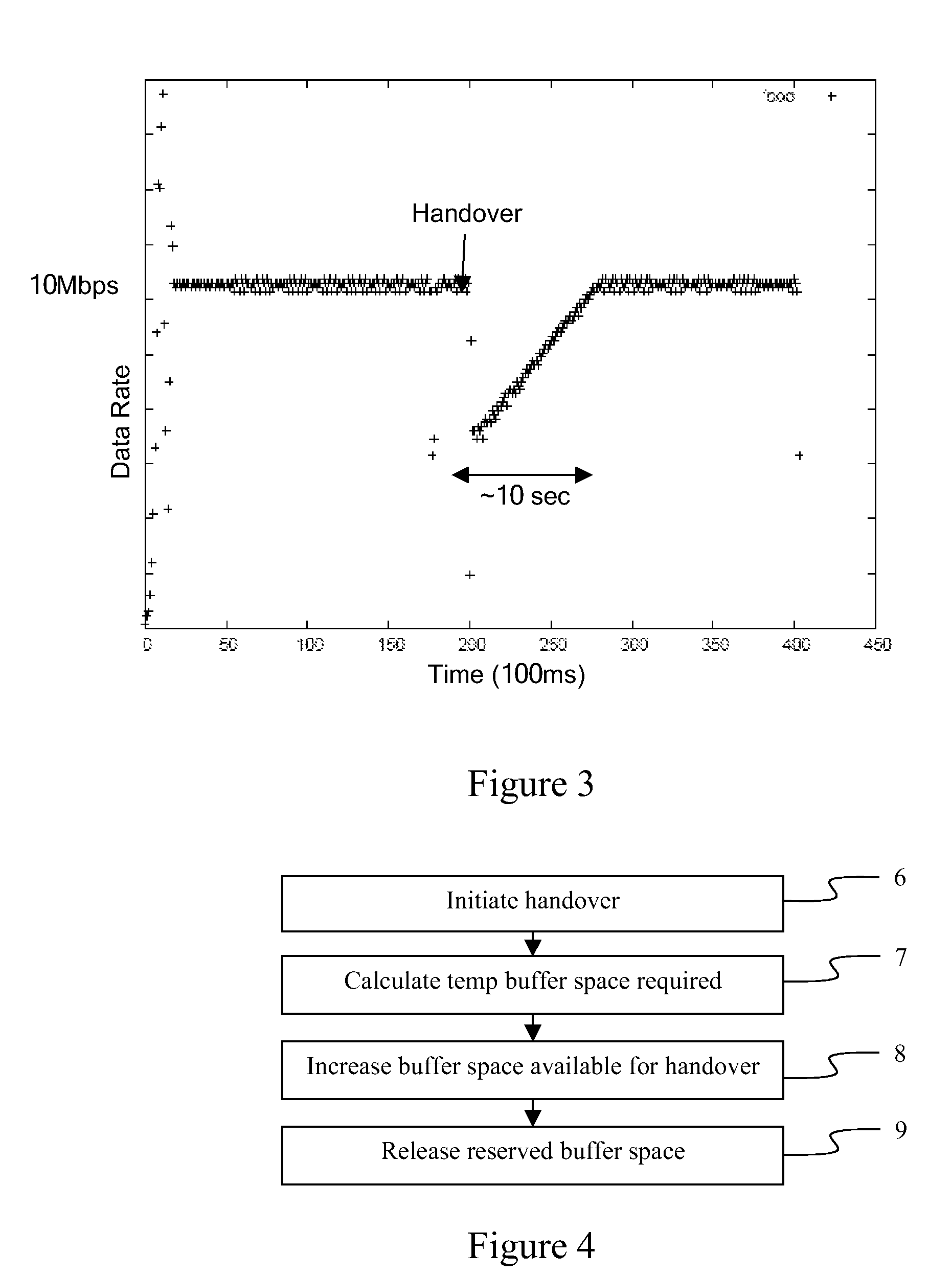Reducing buffer overflow
a buffer overflow and buffer technology, applied in data switching networks, instruments, frequency-division multiplexes, etc., can solve the problems of buffer overflow, buffer overflow, buffer overflow, etc., to reduce buffer overflow or eliminate the effect of buffer overflow, saving buffer overflow, and small roundtrip tim
- Summary
- Abstract
- Description
- Claims
- Application Information
AI Technical Summary
Benefits of technology
Problems solved by technology
Method used
Image
Examples
example calculation
[0066]Assume the following network case:[0067]N=100 users in a cell[0068]Base round-trip time RTT=100 ms[0069]Handover interruption time 100 ms[0070]Handover frequency: F=1 / minute
[0071]The usual setting for downlink buffers is BDP or 2*BDP. This is to ensure that TCP can survive a single buffer drop event.
[0072]Assume that the buffer growth is Bgrowth=Rd*RTT. It means that if the buffer size is BDP, the probability of buffer overrun is Poverrun=100%. If the buffer size is 2BDP, then Poverrun is calculated according to equation 6:
[0073]Poverrun=2×BDP(2BDP+BDP)=67%(6)
[0074]By dynamically allocating temporary buffer space to each user when a handover is required, Poverrun is reduced to 0%.
[0075]If, instead of dynamically allocating temporary buffer space, a larger buffer was provided, in order to achieve a maximum overrun probability of Poverrun, a buffer size must be provided according to equation 7:
[0076]Bsize>BDP×(2-Poverrun)Poverrun(7)
[0077]Table 1 shows the buffer size required ...
PUM
 Login to View More
Login to View More Abstract
Description
Claims
Application Information
 Login to View More
Login to View More - R&D
- Intellectual Property
- Life Sciences
- Materials
- Tech Scout
- Unparalleled Data Quality
- Higher Quality Content
- 60% Fewer Hallucinations
Browse by: Latest US Patents, China's latest patents, Technical Efficacy Thesaurus, Application Domain, Technology Topic, Popular Technical Reports.
© 2025 PatSnap. All rights reserved.Legal|Privacy policy|Modern Slavery Act Transparency Statement|Sitemap|About US| Contact US: help@patsnap.com



